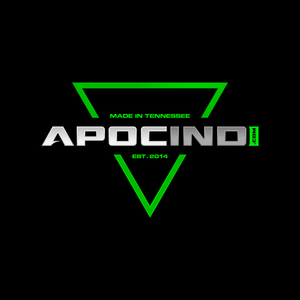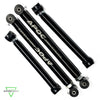Lift blocks
What are lift blocks? Why do I need lift blocks? Let’s go over some reasons for using Lift blocks and their drawbacks. A lift block is simply a metal or spacer that goes between your rear axle and the leaf springs; depending on how the rear axle is set up, a block can lift or lower a vehicle. If the axle is on top of the spring, it will lower the car, lift blocks will raise the car if the axle is under the leaf spring, and with either setup, longer U bolts will be needed when adding a larger block.
Block width
Leaf springs come in different widths, usually 2.5” or 3” wide, and when purchasing a lift block, getting a lift block that is the proper width is crucial to strength and safety; if the Lift block is 2.5” and the spring is 3” wide then the block can move (twist) between the U bolts creating a weak mounting point between the leaf spring and axle and keep in mind allow the torque the vehicle produces is put to the ground at the rear axle. There is a lot of pressure on the block when accelerating.
Types of lift blocks
The most common style is a cast lift block. These are abundant and cheap to purchase, and for many applications, they are a great choice, typically 3-4” is the max you should use with this type of block because of the design that allows for axle wrap (which we will discuss later)when going over the 3” height of a lift block.
Tapered lift blocks are the most common when adding 4” or more of lift using a lift block; the reason is that the taper helps to correct the drive line angle, and these angles are critical to have correct. If your drive shaft angle is off, you can cause vibrations and premature wear to drive line components.
Axle wrap
What is Axle wrap? Axle wrap is caused by the rotation of the axle on acceleration; the force is carried into the leaf spring, causing the spring to bow like a figure S. The taller the block, the more leverage that is applied to the leaf spring, causing more bow in the spring which can then result in wheel hop which is the spring straightening back out. One of the best fixes for axle wrap is Ladder / Traction bars. They connect to the axle and the frame eliminating all axle wrap but stopping the axle from twisting. When using anything more than a 6” lift block, we recommend a set of ladder bars to prevent the axle wrap.
Lift block pins sizes
Lift blocks can vary in width, but they also have multiple locating pin configurations, and getting the correct pin size is a crucial factor to consider. Below I will list some variations of lift block locating pins ( center Pin) with their vehicles so you can see some available options.
2.5” wide blocks will usually run a 1/2” or a 9/16” locating pin. The Jeep Cherokee uses a 1/2” pin a Chevy 1500 will use a 9/16” pin, but the block width is the same.
3” wide blocks have quite a few pins sizes. The Ford 250 uses a 5/8” pin. In contrast, the Dodge Ram 2500 uses a 3/4” pin on earlier models, and newer models of 3 locating pins in the leaf spring, and 2011 up to the chevy 2500 runs an 18mm Pin. Then you have a block like the F-150 that uses 2 3/4” pin instead of one location pin.
Why choose Apoc Industries Lift blocks?
Apoc Industries Tapered Lift blocks have considered all these factors when designing our lift blocks; our locating pins will match the size of your vehicle, the width will also match the leaf spring, and we have a taper added to help with the drive line angles. Last but not least important was the extra wide leaf spring mounting pad. This added width on the top of the block is 13” instead of the standard 6” of cast or stock blocks; what does this do? It helps prevent axle wrap and wheel hop by spreading the force out in a broader section of the leaf spring, creating an excellent mounting pad for our tall lift blocks and added stability. We aren’t done yet. We also have holes added to the top of the block to add a smaller bolt that will clamp to the spring to reduce axle wrap even more, these u bolts are 12” apart, and in addition to the factory u bolt location, that will still be used. And also, as with all our products, these are made in Knoxville, TN using US materials.













